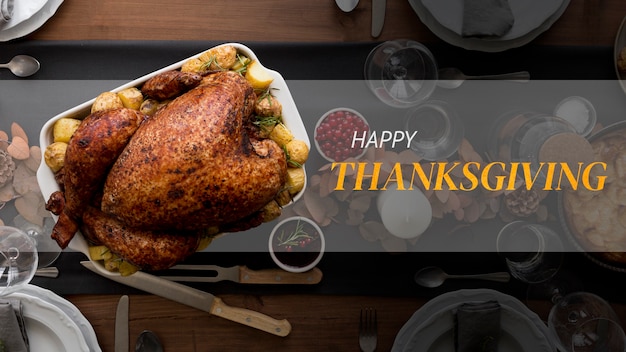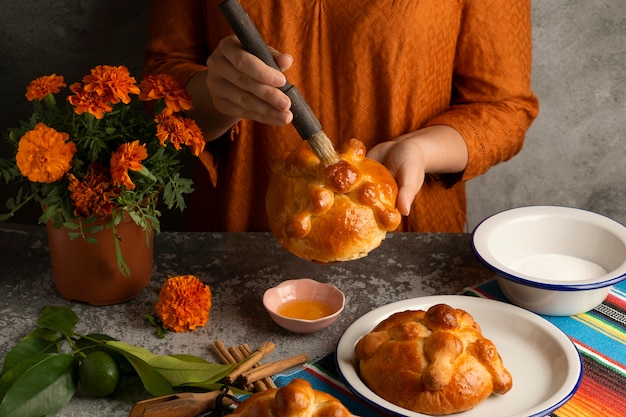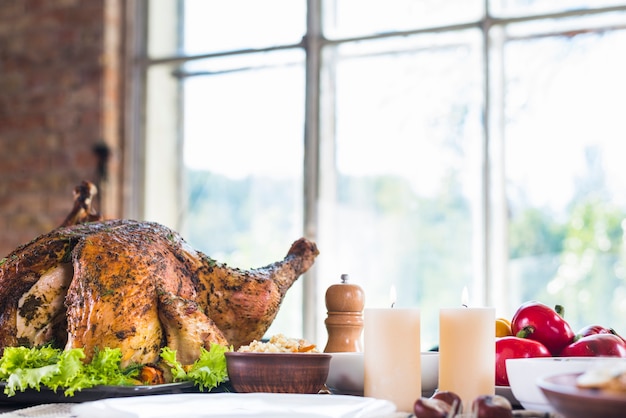Sizing Up the Challenge: 21 lbs of Turkey

A 21lb turkey is a serious undertaking! It's not just about tossing it in the oven and hoping for the best. We need a bit of strategy here, to ensure that giant bird comes out juicy, tender, and cooked through, with those lovely crispy edges we all crave.
The Importance of Temperature

The biggest mistake people make when roasting a turkey is rushing the process. You want to cook it low and slow, so the heat can gently penetrate the meat without drying it out. This is where temperature is king.
You're aiming for an oven temperature of around 325°F (160°C). This is the sweet spot for a slow, even cook. Now, let's dive into those cooking times.
turkey cooking time: The Basics

As a general rule of thumb, for a 21lb turkey, we're looking at approximately 15 minutes per pound, or about 5 hours and 15 minutes of cooking time. Remember, this is just a starting point. Stuffing, brining, and even the quirks of your oven can affect the total time. So, be prepared to make adjustments.
The Role of Stuffing
Stuffing adds an extra layer of complexity because it also needs to reach a safe internal temperature. It's not just about the turkey being cooked - we want to make sure the stuffing is cooked through too, for food safety. If you're stuffing your turkey, add an additional 30 minutes to the overall cooking time.
Brining: The Secret to juicy turkey
Brining is a bit of a game changer. It's like giving your turkey a super-hydrating spa treatment before roasting. You soak it in a salty solution, which draws moisture out and then draws it back in with flavour. It's a magic trick for a juicy, tender turkey! You'll probably find your cooking time is a bit shorter - maybe 15-20 minutes - when you brine.
The Unsung Hero: The meat thermometer
I've learned the hard way that relying solely on time to judge a turkey's doneness is a recipe for disaster. A meat thermometer is your absolute best friend! This little tool ensures your turkey is perfectly cooked, with no guesswork involved.
The Magic Number: 165°F
The USDA recommends an internal temperature of 165°F (74°C) for the thickest part of the thigh. You want to make sure the temperature stays at 165°F for at least 3 minutes. Don't just stick the thermometer in and pull it out quickly - let it sit there to get an accurate reading.
The Roasting Process: Step-by-Step
Let's walk through the actual roasting process, step-by-step, to make it as smooth as possible.
Step 1: Prepping the Turkey
First, give your turkey a thorough rinse inside and out. Pat it dry with paper towels and then get ready to season it! This is your chance to get creative. Herbs, spices, garlic, salt, pepper, citrus zest - the possibilities are endless.
Step 2: Trussing: Keeping It Tidy
Trussing your turkey is like giving it a little hug, holding it all together so it cooks evenly. It's not strictly necessary, but it helps to prevent the legs from drying out and keeps the breast from overcooking. It also gives your turkey a nice, tidy look.
Step 3: Time to Roast!
Preheat your oven to 325°F (160°C). Place your turkey in a roasting pan, breast side up, and insert the meat thermometer into the thickest part of the thigh. The thermometer is going to be your trusty companion throughout the roasting process.
Step 4: The Roast
Now, for that 21lb turkey, we're looking at around 5 hours and 15 minutes of roasting time. During this time, it's important to baste the turkey every 30-45 minutes. This keeps it moist and prevents it from drying out. Use the pan drippings or a mixture of butter and broth for basting.
Step 5: Resting is Key
Once your turkey hits that 165°F mark, take it out of the oven and let it rest for at least 30 minutes before carving. This allows the juices to redistribute, so your turkey is as tender and juicy as possible.
(Part 2)Beyond the Basics: Mastering the Roast
Now that we've covered the essentials, let's explore some techniques and tips to make your turkey roast truly exceptional.
Brining: The Moisture Boost
Let's delve deeper into the world of brining, the secret weapon for juicy turkey. It's basically a salt bath that gives your turkey an incredible moisture boost. There are two main methods: dry brining and wet brining.
Dry Brine
Imagine a salt rub, but on a grander scale. A dry brine is like a salt massage for your turkey. You generously rub the salt onto the bird and let it sit in the fridge for several hours or even overnight. The salt draws moisture out, making the turkey's surface dry, but then it absorbs the moisture back in, carrying the salt with it. This creates a beautifully flavorful and juicy turkey.
Wet Brine
Wet brining is all about submerging your turkey in a liquid solution. It's a more immersive way to infuse moisture and flavor. You'll typically use a mix of water, salt, sugar, and sometimes herbs and spices. A wet brine can transform even the driest turkey into a tender, flavorful dream come true.
Aromatic Powerhouse: Flavour Boosters
You can infuse your turkey with a delightful array of flavors by adding aromatic vegetables and herbs to the roasting pan. Think onions, carrots, celery, garlic, bay leaves, thyme, and rosemary. These ingredients not only add flavor but also create a delicious pan sauce.
Pan Sauce: A Culinary Symphony
Don't even think about throwing away those pan drippings! They are the foundation for a stunning pan sauce. After removing the turkey, pour off any excess fat, leaving those browned bits in the pan. Deglaze the pan with wine or broth, scraping up the fond (those delicious brown bits) and simmer until it reduces and thickens. This is your pan sauce, a masterpiece to complement your perfectly roasted turkey.
Frequently Asked Questions
I know you might have some questions about roasting a turkey, so let's address some of the most common ones.
FAQs
Let's dive into the details and answer some of your burning questions.
| Question | Answer |
|---|---|
| How long should I let a 21lb turkey rest after roasting? | It's crucial to let the turkey rest for at least 30 minutes after removing it from the oven. This allows the juices to redistribute throughout the bird, ensuring a juicy and flavorful result. |
| Can I roast a turkey with the stuffing inside? | While it's traditional, it's not recommended to stuff the turkey and then roast it. Stuffing needs to reach an internal temperature of 165°F to be safe. If you're stuffing your turkey, cook it separately in a baking dish. |
| What's the best way to prevent a turkey from drying out? | Basting regularly, using a meat thermometer to ensure it doesn't overcook, and brining are all effective ways to prevent a turkey from drying out. |
| Can I freeze a turkey before roasting? | Yes, you can freeze a turkey. Just make sure to thaw it completely in the refrigerator before roasting, allowing enough time for it to thaw evenly. |
| What are some alternative roasting methods? | You can also roast a turkey using a smoker or a rotisserie. These methods can create a delicious and unique flavor. |
The Art of Leftovers: Making the Most of Your Feast
You've put so much love and effort into your turkey, and you're bound to have leftovers. Don't let them go to waste! Those leftovers can be transformed into delightful meals for days to come.
turkey salad: A Classic Comeback
A classic and always crowd-pleasing option, turkey salad is easy to make and can be enjoyed on sandwiches, wraps, or salads. Combine chopped turkey, celery, onion, mayonnaise, and your favorite seasonings for a satisfying and flavorful meal.
turkey soup: Warm and Comforting
A warm and comforting bowl of turkey soup is perfect for chilly days. Use leftover turkey, broth, vegetables, and herbs to create a comforting and satisfying soup.
turkey pot pie: A Hearty Delight
Turn those leftovers into a hearty and delicious pot pie. Use a flaky pie crust and fill it with a creamy mixture of turkey, vegetables, and gravy. It's a crowd-pleasing dish that's perfect for a cold winter's day.
Turkey Noodle Casserole: A Family Favourite
This classic casserole is a great way to use up leftover turkey, noodles, and vegetables. Layer the ingredients in a casserole dish, top with breadcrumbs, and bake until bubbly and golden brown.
Final Thoughts: Embrace the Journey
Roasting a 21lb turkey is a culinary adventure. It's about embracing the process, experimenting with flavors, and enjoying the journey. Remember, it's not about perfection, but about sharing delicious food with loved ones and creating memories that will last a lifetime. So, take a deep breath, follow these steps, and enjoy the delicious fruits of your labor!
Everyone is watching

Corn on the Cob: The Ultimate Guide to Perfectly Cooked Ears
Healthy MealsAh, corn on the cob. Just the name evokes images of sunny days, barbecues, and that sweet, juicy flavour that ...

Perfect Pork Roast Oven Cooking Time: A Guide to Delicious Results
Healthy MealsThere's something truly satisfying about a perfectly roasted pork. The aroma alone is enough to make your mout...

Ham Cooking Time: How Long to Bake, Smoke, or Boil a Delicious Ham
Healthy MealsAh, ham. It's a classic, isn't it? A real crowd-pleaser, especially around holidays. And when done right, it'...

Scallops: The Ultimate Guide to Perfect Cooking
Healthy MealsAh, scallops. Those delicate, sweet, and utterly delicious morsels of the sea. They hold a special place in my...

Spaghetti Squash: The Ultimate Guide to Cooking and Serving
Healthy MealsRemember that time you saw spaghetti squash at the supermarket, looking all bumpy and strange, and thought, "W...
